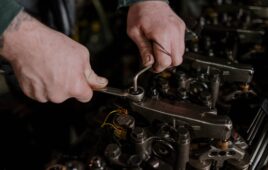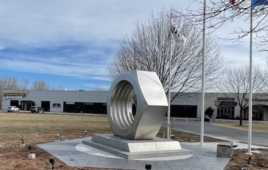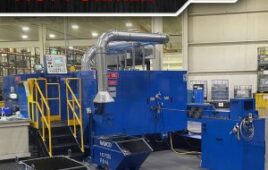Written by Jody Muelaner

A J-nut is a sprung clip that snaps onto a sheet to provide a nut.
J-nuts are a type of clip-on nut, similar to U-clips or U-nuts. Unlike U-nuts, however, J-nuts have one leg that’s shorter than the other. Other types of clip-on nuts include cage nuts and S-nuts.
The advantage of J-nuts is the ability to quickly and easily attach to sheet metal parts or panels without requiring any tools. Essentially, they provide the nut so that a bolt or screw can be fastened to the panel.
These components are typically formed from a strip of sprung steel, bent into a “J” shape to form two legs. Its longer leg either has a hole with prongs that form a “speed nut” or a thicker nut with tapped threads attached to it. Its other leg is shorter so that it doesn’t interfere with the bolt.
A speed nut is when the threads are formed directly from the prongs in the sheet metal leg of the J-nut. This is a simple and economical way to provide a thread and also acts as a lock nut. Though one disadvantage of this type of thread is that it’s relatively weak and will fail if fasteners are tightened to high torque. But if the pre-formed threads are tapped into a thicker nut, they will be stronger, allowing fasteners to be tightened to greater torque.
Such a nut may be attached to the sheet metal body of the J-nut in two ways. The nut may be held captive within tabs folded from the clip. This has the advantage that some float is possible to compensate for poor alignment between holes. Alternatively, the nut may be spot welded or swaged to provide a highly secure connection.
The legs of a J-nut may also be flared out at the ends, forming lead lips that make it easier to push the clip over a panel edge. As the J-nut is pushed over a sheet, its legs open outwards and the component exerts a light clamping force that holds it in place.
Some J-nuts have tabs designed to fit into holes in the panel, providing for better accuracy, security, and a more positive attachment.
J-nuts may be constructed from mild steel, with or without plating, or from other metals including stainless steel, copper, or bronze. They offer a low-cost, easy-to-assemble and reuse fastener that’s well suited to sheet metal enclosures and assemblies.





Tell Us What You Think!